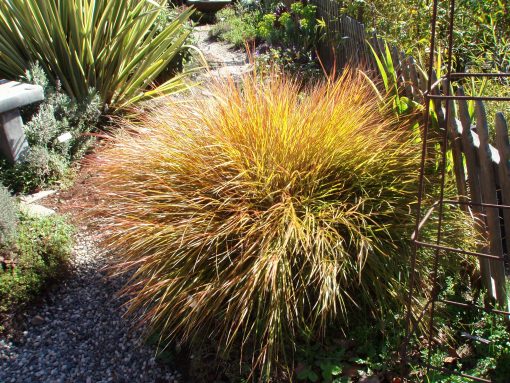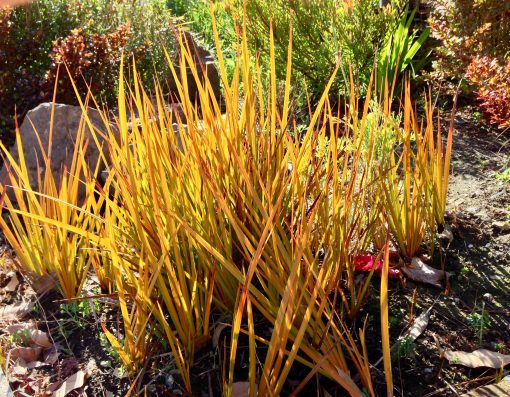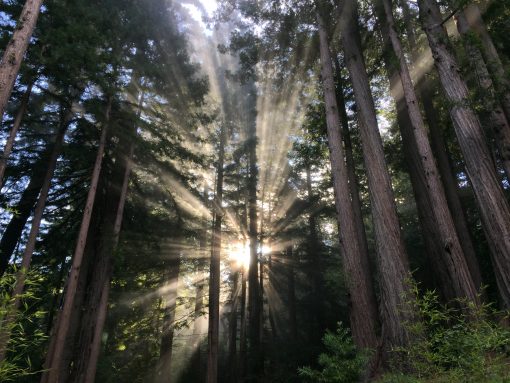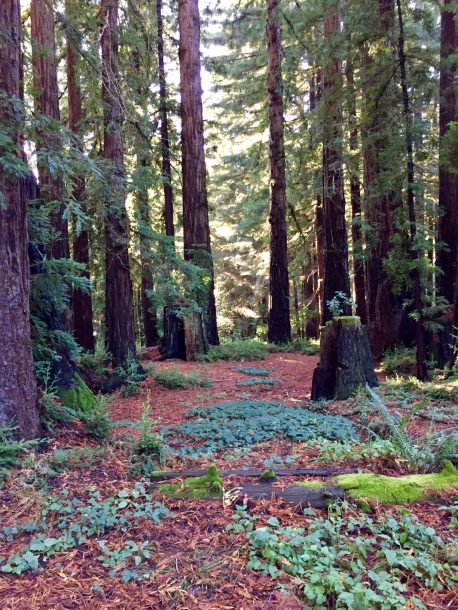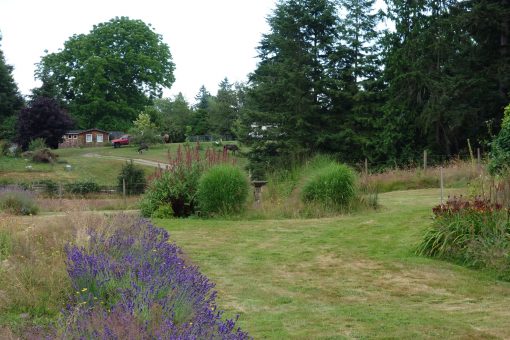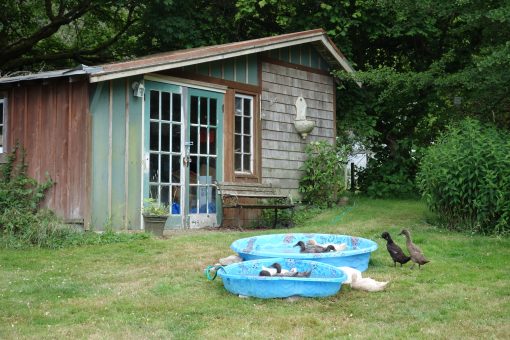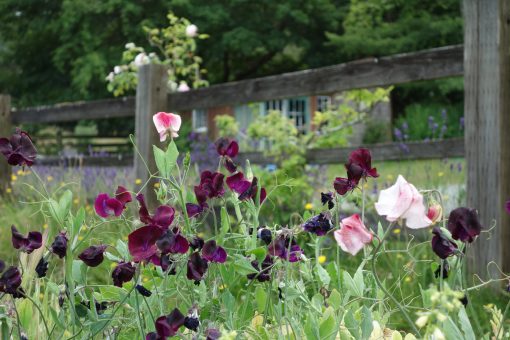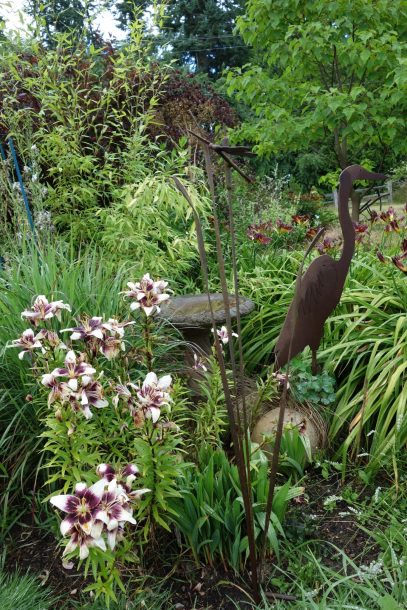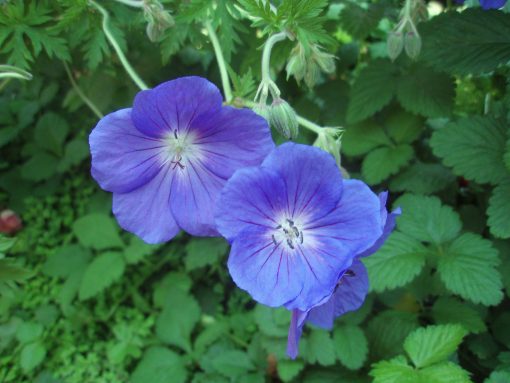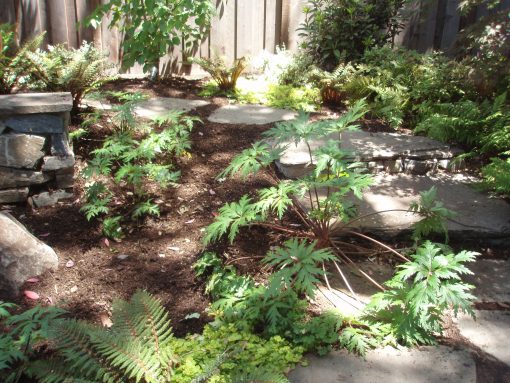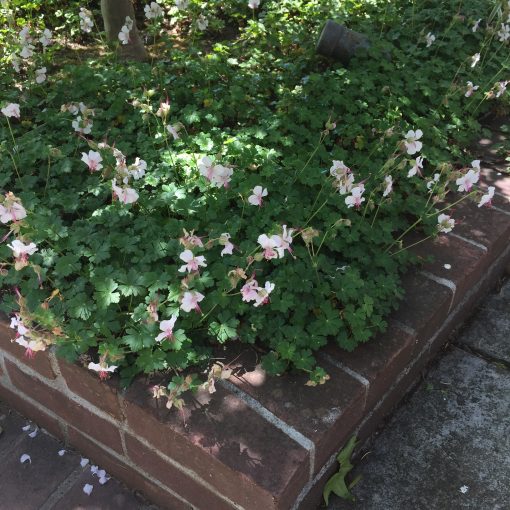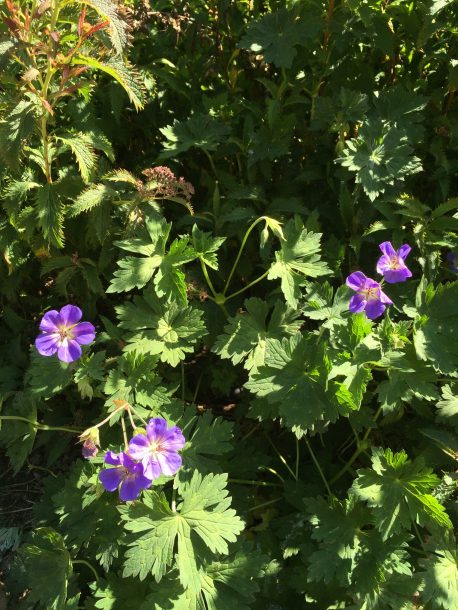The autumnal equinox will arrive on Monday, September 23rd this year. It’s the official start of fall when the sun crosses the celestial equator and moves southward. The earth’s axis of rotation is perpendicular to the line connecting the centers of the earth and the sun on this day. Many people believe that the earth experiences 12 hours each of day and night on the equinox. However, this is not exactly the case.
During the equinox, the length is nearly equal but not entirely because the day is slightly longer in places that are further away from the equator – like where we live. Also the sun takes longer to rise and set in these locations as it does not set straight down but in a horizontal direction.
With the changing of the season, take advantage of fall planting weather. It was a hot summer and I?m ready for fall. This is the perfect time for transplanting or adding new plants to your garden. Why? Cooler air is kinder to plant foliage while soil temperatures are still warm creating an excellent environment for new root growth. In the fall many plants and trees, even broadleaf evergreens, are entering a period of dormancy. With no need to allocate resources into foliage, plants are transferring all their energy into roots and storing nutrients for the cool months ahead. By spring, the new root systems should be well established.
I had hoped to spend some time at the UCSC Arboretum earlier this year when the showy pincushion and leucospermum protea were flowering but I never made it. Because anytime?s a good time to visit the arboretum I dropped by recently. There is always something in bloom there and the hummingbirds know it. Here are just a few of the spectacular fall blooming plants that you might want to add to your own garden.
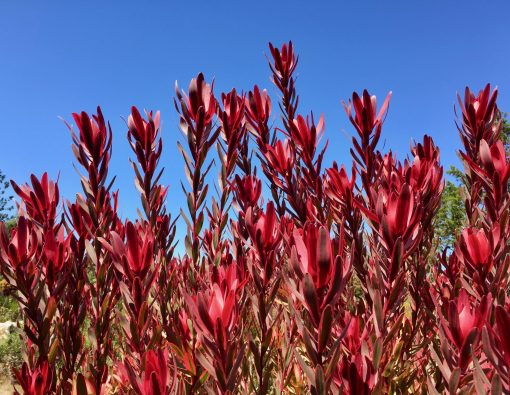
The Leaucadendron ?Jester? (Sunshine Conebush), another type of protea, were loaded with brilliant deep wine-red bracts. This evergreen shrub grows to 5 feet tall and is very pest and disease resistant. Deer aren?t interested in the showy bright pink, cream and green foliage and it?s quite drought tolerant once established. You can cut the branches as they are prized for use in floral arrangement. People think that protea are hard to grow but really it?s a plant-it-and almost-forget-it kind of plant. They need good drainage and don?t like phosphorus fertilizer preferring poor soils with minimal care. Sounds like a winner to me.
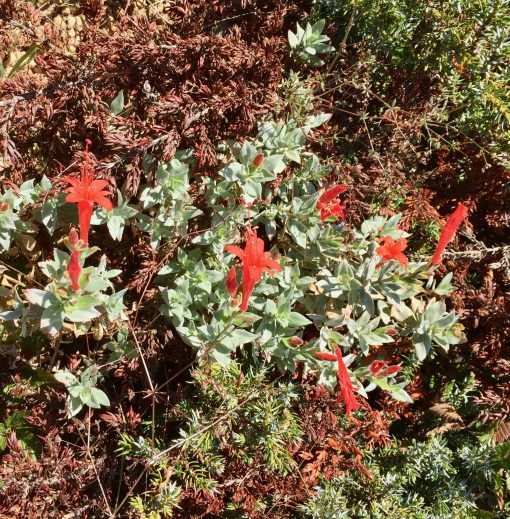
A little further down the trail I came across another easy to care for plant. California fuchsia have undergone several name changes over the years but whether you call them epilobium or zauchneria they are in bloom now. The ‘Mattole Select’ cultivar forms tidy 6 inch high mats of beautiful silver foliage. Late summer through fall brings orangey-red tubular flowers which attract hummingbirds. Spreading by underground rhizomes, this epilobium increases size a little less vigorously than the others. It?s more shade tolerant than most California fuchsias and needs just a bit more water but it?s still quite drought tolerant. Pruning plants down to a few inches in late autumn helps rejuvenate them for the following year.
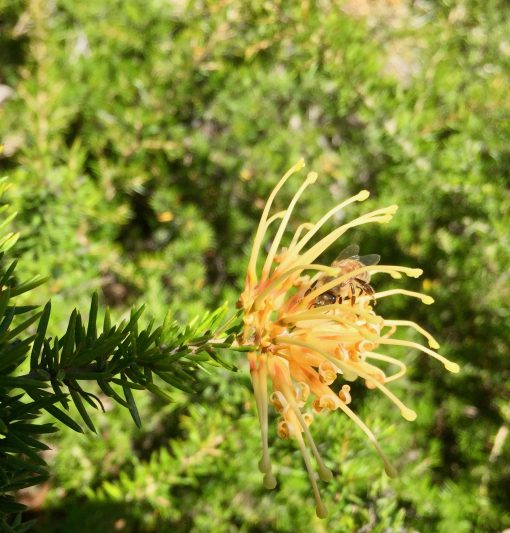
As I followed the hummingbirds around the arboretum I came across another groundcover that both the birds and the bees favored. Grevillea juniperina ?Molonglo? (Juniper Leafed Grevillea) blooms with a soft yellow flower unlike most grevillea. This fast growing evergreen forms a mass of dark green soft needle-like leaves and bears an extremely profuse show of light golden yellow flowers from late spring to winter. This tough hardy drought tolerant plants is the perfect groundcover for large areas and will cascade down slopes and walls.
I?m looking forward to another visit to the arboretum this winter as the Australian garden will be in full bloom then.


